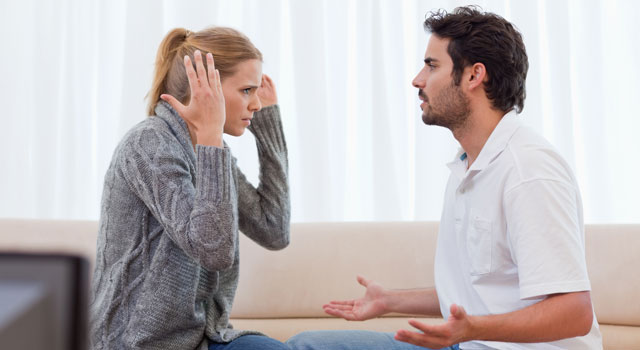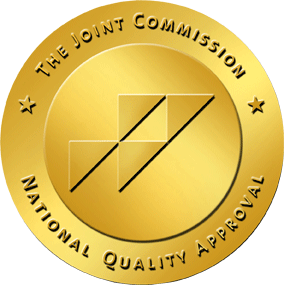
Overview
If you’re interested in learning about Codependency, this article will cover:
• The definition of Codependency
• The negative Symptoms and Results of Codependency
• The different Styles of codependent relationships
Part 1: Intro
The origins of the term Codependency can be traced back to the early days of Alcoholics Anonymous (Al-Anon from now on). Al-Anon was the first self-help group for addicts founded in 1935. After sharing their personal experiences in group-therapy, Al-Anon members quickly noticed that the wives (during this era, most Al-Anon members were straight men) of Alcoholics typically responded with a pattern of overly-supportive enabling behaviors, and thus, the term Codependent was born.
The thing is, we know now that codependency doesn’t just happen in the context of alcoholism. It happens on its own, as well as alongside all sorts of addictions and behavioral problems. Codependent relationships are an unhealthy way of obtaining self-esteem and feelings of safety that deteriorate our identity and independence.
Here are the basics:
- Codependent relationships happen between two individuals
- One person is “troubled” and tends to absorb the other’s energy and resources by behaving selfishly.
- The other person, the Codependent, compulsively takes care of the other at the cost of their own wellbeing and independence.
- Codependency can happen in any type of relationship including those between Friends, siblings, parents + children, coworkers, spouses, and so on
- Although Codependency is a sub-clinical diagnosis, it is highly treatable with support and therapy.
Part 2: Signs and Symptoms
Lovers, friends, and family members help us get through the hard times, as well as enjoy the good times. These intimate relationships that we develop over a lifetime are fountains of energy, inspiration, joy, and comfort and they’re also probably the best part of being alive.
Unfortunately, these relationships can sometimes grow into toxic codependency. If someone in your life is making you feel any of these symptoms, it is time to acknowledge that the relationship might be unhealthy.
Low Self-Esteem:
Codependency is a means of obtaining affirmation, and a sense of purpose and self-worth. However, when we put our self-esteem into the hands of another person, it fluctuates based on his or her moods. A healthier way to boost self-esteem is to form multiple relationships and focus on your inner strengths.
Compulsive People-Pleasing:
Codependents focus far too much of their time on pleasing their more emotionally demanding partner, usually at the expensive of their own wellbeing.
Extreme Reactivity:
Dips in their partner’s mood can lead to extreme emotional reactions in the codependent person.
Feeling Powerless:
When we invest all of our emotional energy into an unstable person, we can feel like we have no control over our own lives.
Isolation– As a codependent relationship grows, all the other relationships in our lives start to fade, and disappear completely, until we are alone with that one partner.
Obsession:
Codependents rely on their relationship for their sense of self-worth, so over time, it becomes everything they think about! Nothing else seems important anymore in comparison.
Intimacy Problems:
When we become codependent, we are not forming a functional, well-rounded bond. Instead, we are relying on each other for specific psychological needs, so real communication is downright impossible. Intimacy problems might manifest as a fear or reluctance to talk about certain topics in order not to upset your partner.
Painful Emotions:
Being codependent isn’t a happy condition. With all of these specific symptoms going on, we’re bound to feel depressed, anxious, hopeless and lost.
Part 3: Styles of Codependent Relationships
Experts used to think of Codependency as a problem that goes along with alcoholism. Nowadays, we know that it can happen in a wider variety of situations. There’s no way to list every type of codependent relationship, after all, every situation is unique, but here are some of the most common types of Toxic Codependency:
Addict + Caretaker
The original concept of codependency involved an alcoholic and his enabling wife (remember, we’re talking about the 1930’s here), which falls into the addict/caretaker dynamic. However, addicts of all kinds attract codependent partners. It doesn’t matter if the problem is alcohol, drugs, gambling, shopping, or whatever else. What matters is that all addicts tend to behave irresponsibly, destructively, and selfishly which makes them very, very difficult people to live with. Their partners (platonic or otherwise) fall into the Codependent Caretaker role by cleaning up their messes and providing them with what they need to continue on with their harmful behavior.
This relationship boosts the self-esteem of the caretaker, as it makes them feel needed and important. You may hear this kind of codependent person say things like “I’m the responsible one in this relationship.”
Parent + Child
Perhaps one of the most troubling forms of codependency occurs between parent and child because it inhibits a young person’s emotional development. Typically, the parent becomes emotionally dependent on their role as a caretaker to their naturally needy young children. It’s quite normal for all parents to gain a feeling of pride in their familial role. However, codependent parents behave in a way to prolong the ‘needy state’ of their children, unnaturally prolonging their role as caretaker. They will prevent their kids from growing up into independent adults so that they forever rely on their parents for everything.
You can imagine how difficult it is for the child to break free from this relationship since it formed a major part of their development.
You might hear a codependent parent complain about their child’s lack of independence. However, their behavior will contradict that. You will see them continue to spoil and encourage their adult children to rely on them.
Dysfunctional Adult + Enabler
When we shirk responsibilities and fail to meet life’s basic demands, the universe responds with a swift kick to the behind. Not paying bills and skimping on self-care gets us into trouble, which usually ‘trains’ us to be more responsible. Messing up once or twice is usually enough for us to learn to get our acts together as adults. However, in some cases, dysfunctional adults find a partner willing to take over when they give up. This partner is an Enabler because their overly-helpful behavior allows the dysfunctional person to continue on their path of self-neglect. Ironically, the enabler is doing much more damage with kindness than they realize. A stern, realistic influence is what the dysfunctional person really needs.
You might hear the enabler say things like: “I’m the sane one,” or “I don’t know what (s)he would do without me.”
Fix Your Codependency Issues Through Our Family Therapy Program
If you and your family are struggling with the effects of codependency, know that you do not need to keep on the path towards self-destruction. You and your family can obtain the care that is needed to better yourselves in the midst of what might feel like an all-out crisis.
As your loved one is obtaining treatment, do what you can to get help for yourself by participating in Breathe’s Los Angeles family therapy program. Doing so can make a huge difference in your life and the lives of your loved ones. Call us today and begin your healing process.













